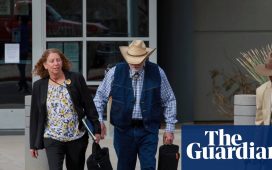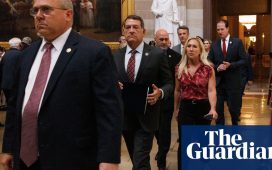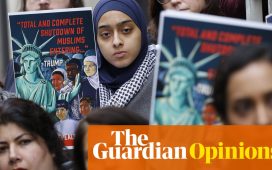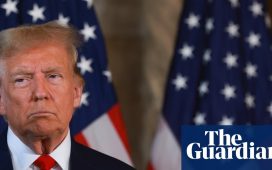Edward Marquez, the father of my classmate when I was growing up, became a border community hero in 1994 when, as a state district judge from El Paso, he initiated a rare legal maneuver that resonated along the Texas-Mexico border. Fed up with a long history of disparate funding and state services to border communities from the state capital in Austin, he convened a court of criminal inquiry – a weapon in the legal arsenal that is available when a judge has evidence that a prosecutor fell short of pursuing a criminal case and justice was not being served.
In this instance, it was evidence of historical neglect for Texas border communities. The unprecedented court of inquiry highlighted funding disparities to border communities such as a $43 per capita allotment to El Paso in state highway funds compared with as much as $220 per capita for other Texas cities. State leaders were subpoenaed to testify about the funding disparities, always with the threat that Judge Marquez had the power to indict them if he found compelling evidence that they had violated the rights of border residents under the state’s equal protection clause.
Ultimately, an embarrassed Democratic administration, led by the then governor, Ann Richards, ensured additional funding went to border cities like El Paso and the legacy of Judge Marquez was cemented in history.
The political reality that the judge brought to national attention nearly three decades ago, however, continues to plague border communities and has created an uncomfortable political paradox: the communities need the attention of state and national policymakers to highlight massive problems with poverty, health issues and educational attainment. But whenever this region draws international attention, that attention has little to do with these social issues and everything to do with the heated debate over immigration.
Unfortunately, this paradox is as old as the border itself and feeds into negative stereotypes about the safety of this region, while acting as an economic drag. In 2016, McAllen, in south Texas, was selected by an amateur sports federation as a two-year venue for a statewide competition that typically attracts thousands of young athletes . Texas cities yearn to host the event because as many as 20,000 or more parents and kids show up to watch and compete – all the while ringing up hefty hotel and food bills that contribute to the local economy.
But before the Games of Texas, as it’s called, began that year, south Texas got word that parents in different parts of the state were concerned about border violence. While Mexican drug cartels were often listed as the main source of concern, another immigration surge was well under way. Word got around that some parents were even talking about organizing spinoff games in north Texas to avoid having to expose their families to the treachery of the south Texas borderlands.
Community leaders launched a counter-offensive, writing columns for newspapers in other parts of the state and vowing to show off the region’s family spirit. Parents who braved the trip to south Texas left that first year impressed with the local hospitality, and any widespread concern about the dangers of the region seemed to disappear the next year.
Virtually every year, the Democratic border congressman Henry Cuellar issues a press statement following the annual release of the FBI Uniform Crime Report to demonstrate the safety of border communities relative to other cities across Texas and the nation.
But too often, elected officials seeking a quick photo opportunity politicize the border rather than address the needs of its communities. The local joke is that if you’re a Republican a border tour requires a ride up the Rio Grande on a state-owned, armored plated gunboat (federal vessels are much less ominous looking and rarely make the photo-op cut). But if you’re a Democrat, the border tour entails a must-see-and-be-seen visit to a local facility that provides humanitarian services to migrants.
When the then speaker of the House, Paul Ryan, visited the border in 2017, federal authorities approached landowners along the Rio Grande to ask them to keep the media off their property, trying unsuccessfully to make private a huge swath of international boundary.
Sometimes it’s best to view these border tours with a sense of levity. One go-to place to visit is the county-owned Anzalduas park, a birdwatching paradise on the banks of the Rio Grande, which provides a magnificent vista overlooking Mexico. When President Trump visited in January 2019, US Customs and Border Protection attended with all its glorious, mechanized immigrant-fighting vehicles on display.
But it is the Texas Republican senator John Cornyn (to his credit, a frequent border community visitor) who will live in infamy after he visited the park to decry the dangers of immigration in front of media cameras. His timing was slightly off; as he spoke, journalists witnessed the launching from the Mexican shore of a double-decker party boat touring the beautiful river, accompanied by festive music.
Trump’s most recent visit to the border, in June, shows how misleading such tours can be. The newly elected mayor of McAllen was the only local elected official who toured the wall with Trump and the Texas governor, Greg Abbott. Little beyond the wall and the dangers of the migrants were mentioned.
For business and political leaders along the border, these visits offer little by way of solution and serve only to further inflame passions about immigration. In a rare moment when a large group of US senators allowed a local elected official to speak about the community, the official urged the members of Congress to overhaul existing immigration laws because the current system is broken.
“We can’t do that until we stop these immigrants from crossing,” one senator told the local official. And soon that particular border tour ended – after the senators met with the media and posed for a few photos near the river.
Carlos Sanchez is director of public affairs for Hidalgo county, Texas. He was a journalist for 37 years and has worked at the Washington Post and Texas Monthly magazine, as well as eight other newsrooms






